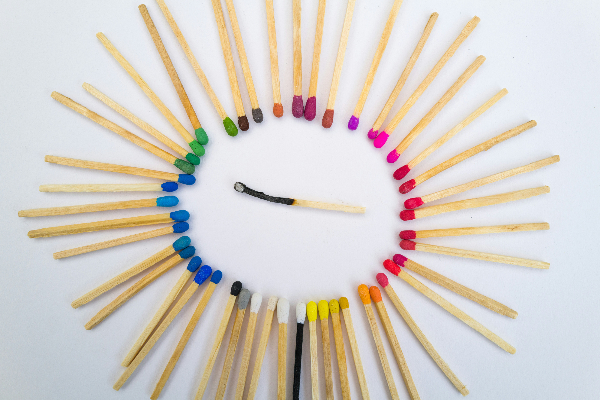Bridging the Trust Gap

A global pandemic, a presidential election, racial injustices, virtual learning and social distancing, all contribute to a challenging fall. In this tense and polarizing environment, you may find it particularly difficult to establish positive relationships with your students. In my experience, there is one ingredient that allows for honest communication, a sense of respect towards each other, maybe even a shared purpose. Do you know what it is? It’s trust. Trust is at the heart of any successful relationship.
In my forthcoming book, Teaching with the HEART in Mind, I explore trustworthiness as one of the key elements in the development of positive and caring relationships in the classroom, so students can feel loved and supported and are given the opportunity to reach their full potential. Take a look at this snippet and sign up to get an update on the book’s launch!
Trustworthiness
Creating a classroom where teachers trust students and students trust teachers has many benefits: students are more likely to improve their academic performance, more willing to follow class rules and more likely to engage with the content and ask questions. In addition, there are several studies that show how when teachers trust their students, their pedagogy changes. For example, teachers share more control of the classroom with students or are more likely to engage in constructivist practices or differentiate instruction.
Teachers’ trust in students also plays a crucial role in students’ social integration and sense of belonging in school. But, what is trust? And how can we give and earn it?
Trust is something that you feel; it is an emotion, a basic human signal that helps us survive and thrive. When we don’t trust a person, our emotions are signaling, “this is not okay,” which might cause us to disengage, ignore the person, or fight back. Try to remember a boss or a colleague that you didn’t trust. Were you able to fully express yourself? Did you feel safe in the relationship? Did this person trust you? The answer to each of these questions is probably “no.” Trust is reciprocal and also contagious. If you don’t trust your students, you’ll rarely gain trust from them. The same is true the other way around; if a student doesn’t trust you, you will probably have a hard time trusting them.
Differences in social and cultural backgrounds and circumstances make it harder to trust others. For instance, BIPOC students and their families may have a hard time trusting their White teachers, given the existing institutionalized racism in U.S. schools. At the same time, White teachers may not be inclined to trust their BIPOC students due to their own bias and learned beliefs. This trust gap may hinder academic success for minorities—middle school students who lose trust in their teachers are less likely to attend college even if they generally had good grades, according to psychology research at The University of Texas at Austin. Without seeing these patterns, teachers will not be able to do the work to counter them and build authentic trust. We must recognize this challenge, and put in the work to break this cycle.
Differences in social and cultural backgrounds make it harder to trust others. This trust gap may hinder academic success for minorities.
Tweet
4 Strategies to Earn Your Students’ Trust
- Be honest. The way you show up for class affects your students’ emotions and their dispositions to learn. If you are upset or stressed, your students will be too; emotions are contagious. Being honest also means avoiding gaps between what you say and what your students perceive. Check for understanding, and when you commit to doing something with or for your students, follow through.
- Be coherent. Model the behavior you hope your students will display in class. Check your goals, classroom routines, and assignments; are they aligned? If you want students to show initiative, create opportunities for them to make choices about how they learn. If you encourage students to provide feedback, do something with it! Being coherent means that you are consistent (in your expectations and classroom structures) as well as reliable (you’ll do what you say you’ll do).
- See the humanity in all your students. You can foster genuine connections when you show students that you care. The emphasis here is not the caring (which I know you do), but the showing. Have you recently had a non-school-related chat with students who display challenging behaviors? Those informal conversations can go a long way in furthering your efforts to give and earn your students’ trust. Celebrate students’ accomplishments (big and small), and persevere in getting to know them. Show that you care for them without conditions; every student knows you care just by being in your classroom.
- Trust yourself. Trust starts with you. In order to trust your students, you need to trust yourself first. Even when you make mistakes or things don’t go as you had planned, show yourself some compassion. Have faith in yourself.
Trust is at the heart of any successful relationships and a key ingredient for supportive learning environments. Trust is both given and earned: we need to trust our students, so they can trust us. Be honest and coherent, examine your bias, build bridges to know your students and see their humanity. Try these strategies, and drop me a note to tell me how they worked!
Equity Centered SEL
Based on popular demand, I will be sharing one resource that can help you center your SEL work in equity in each post. While the 3 bridges to an equity centered SEL can be a starting point to understand the necessary shifts, the work is complex and we will need to pull as many resources as possible to make this work happen.
This Social, Emotional and Academic Development Through an Equity Lens report from Ed Trust is a great resource that shares BIPOC focus group data and provides practical recommendations for research and practice.
Do you want to receive these posts in your inbox? Sign up to receive my newsletter!
Subscribe to the HEART in Mind Newsletter
Research-Based Strategies for your SEL Toolbox









